Ruby engagement rings and weddings rings have at their heart a gemstone which has been treasured for hundreds of years, the stones are durable, feature an unparalleled brilliance and fire, they are also increasingly rare and above all else are beautiful.
Like most online shoppers, you’ll want to make sure you’re getting the absolute best value for money from your ruby ring engagement ring, ensuring you’re picking a quality gemstone. The aim of this article is to provide all the information you’ll need in order to make an informed buying decision. We’ve also included a special guide for caring for your ring, and some top shopping tips in order for you to find the ruby wedding ring of your dreams.
If you still have questions after reading this article, please feel free to reach out to us. Either through the comment form at the bottom of the page, or reach out to us over email or on our facebook page. We love to hear from our readers, so don’t be shy. If you’ve recently bought a ruby ring, feel free to share your pictures and comments.
A Ruby has many remarkable properties:
- Durability = Excellent
- Hardness = 9.0
- Refractive Index = 1.762 – 1.770
- Specific Gravity = 4.00
Rubies and saphires come from the same mineral family know as Corundum. The only real difference between rubies and saphires is the colour. Rubies are always red and saphires make up all the other corundum colours, with the exception of pink-orange colours which are known as Padparadscha.
ADALENE OCTAGON RUBY RING - Buy it from Otomo
ADALIE ROUND RUBY & WHITE SAPPHIRE RING - Buy it from Otomo
ADALIZ OVAL RUBY & WHITE TOPAZ RING - Buy it from Otomo
ADELA OVAL RUBY & WHITE ZIRCONIA RING- Buy it from Otomo
ADELE ROUND RUBY, WHITE ZIRCONIA & ROSE GOLD RING - Buy it from Otomo
ADELISE ROUND RUBY RING - Buy it from Otomo
ADRIANNA EMERALD CUT RUBY RING - Buy it from Otomo
ALAIN ROUND RUBY, BLACK DIAMOND & WHITE GOLD RING - Buy it from Otomo
AIDA ROUND RUBY & WHITE ZIRCONIA RING - Buy it from Otomo
Ruby Ring in 18k Yellow Gold - Buy it from Etsy
Sterling Silver Ruby Ring - Buy it from Etsy
Ruby and Diamond Flower Ring - Buy it from Etsy
Adamina Ruby Ring - Buy it from Etsy
Large Raw Stone Ring - Buy it from Etsy
Ruby Stacking Ring - Buy it from Etsy
Stardust Ruby Ring - Buy it from Etsy
Ruby Heart Signet Ring - Buy it from Etsy
Stackable Ruby Ring - Buy it from Etsy
Meaning of the Ruby
The ruby has long been regarded as a gemstone which is closely related to passion, but the gem is also understood to imbue several other desirable characteristics to the wearer, such as knowledge and an ability to make the correct decisions. Additionally, rubies are associated with awareness and inspiration, they are able to guide the wearer towards the ideal path in their life.
For a couple considering purchasing either a ruby engagement ring or a ruby wedding ring, the gemstone perfectly symbolises a long lasting passionate and affectionate relationship. The gem is and expressive representation of a long, loving and beautiful relationship.
The ruby is also the classic birthstone of anyone born during the month of December, in modern times it’s the birthstone for a July birth.
Enhanced Rubies
Most if not all ruby rings you’ll see for sale have been enhanced in order to improve the colour as well as the general form of the gem. It’s very important to be aware that some types of enhancements will impact the value, durability and appearance of a stone. Some types of enhancements are not at all suitable for a ring to be used every day, as such these should be avoided when picking an engagement ring.
One of the most common enhancements you’re likely to encounter is heat treatment, this is used to improve both the colour of the stone as well as the overall appearance. The treatment process is very common and results in a stone which has an excellent stability rating, rubies which have been heat treated do not require any specialist care or considerations. This sort of gemstone enhancement only marginally affects the stones value.
Another popular ruby enhancement involves filling the gemstones surface with another substance, such as lead glass, this works to both reduce fractures and improve the smoothness of the gem. The addition of another substance has a stability rating of good to fair. A ruby which has been treated in such a way requires additional considerations when it comes to care, they should not be exposed to harsh cleaning chemicals, ultrasonic cleaning, extreme pressure or heat. A fill treatment can in some circumstances greatly reduce the value of the stone.
Other methods of stone treatment involve dyeing or exposing the stone to radiation, both of which are carried out in order to improve the colourisation of the stone or change the colour entirely. These methods are rated as having poor stability and will invariable reduce the value of the gemstone dramatically. Such stones must avoid chemicals, heat, ultrasonic cleaning and pressure. Furthermore, any stone treated in such a way should not be polished or cut as this can cause the treatment to be lost.
When looking to buy a ruby engagement ring in the UK, it’s best to avoid rings that have been dyed or irradiated.
You may rarely come across a ruby which have undergone a treatment called surface diffusion, this type of treatment is intended to enhance the red colouring of the gem. This treatment has a good stability rating, but a ruby which has been treated with surface diffusion are still best kept away from harsh chemicals or ultrasonic cleaning methods. This treatment has a minor effect on the value of the gemstone.
White Gold Ruby Engagement Rings
Any white gold ring will need to be occasionally re-plated with rhodium, on average a wedding or engagement ring which is worn every day will need to be re-plated at least every two years. The rhodium plating process can adversely affect a ruby gemstone which has been enhanced, eventually leading to chips and fractures. For this reason it’s best to avoid white gold when picking a ruby engagement or wedding ring. It’s better to choose platinum, palladium, 18k or 14k rose and yellow gold, or silver. However, if you have your heart set on a white gold and ruby ring, be sure to pick a gemstone which has not been treated, or limit the treatment to heat enhancements only.
Price Guide for Rubies
For a natural ruby the price will most likely be around £800 per carat, however the cost can vary greatly depending on the 4 C’s, which are carat, colour, cut and clarity.
Ruby Colour
For rubies colour is the most important factor to consider. Typically a sought after ruby will be a deep blood red colour which has secondary purple flashes. The colour will be uniformly brilliant across the whole stone.
A ruby which is too light, verging on pink, or are oversaturated with red causing them to be difficult to see through, are the least valuable sort of ruby.
Ruby Carat
As large natural rubies are increasingly rate, the carat weight of a ruby has a very big impact on the price of the stone. A good quality stone that exceeds one carat can be very expensive, easily exceeding £2,500 per carat and in some circumstances go as high as £200,000 per carat.
Ruby Cut
A ruby which has been expertly cut in order to maximise the stones brilliance and fire while also minimising the appearance of any inclusions will be priced far higher than a generically cut commercial stone. A quality cut ruby will maximise the clarity and depth while decreasing the visual impact of any flaws.
Ruby Clarity
Clarity is the last of the 4 C’s which has the least impact on the overall price of the stone. Almost all rubies will contain an inclusion, and even lab grown synthetic gems will have intentional or unintentional inclusions in order to complete the Ruby look.
A large inclusion which is easily visible to the naked eye may impact the value of the gemstone, but generally speaking smaller inclusions will have very little impact on the price of the stone.
Stone Chips or Blemishes
A defect which effects the external appearance of a ruby will have a significant effect on the price of the gem. For example, a chip or track is extremely undesirable and will decrease the rubies value.
Synthetic Lab Grown Ruby
If you’re on a budget or would like to get more bang for your buck, then buying a synthetic ruby should be on your to do list.
Synthetic rubies where first made in 1902 when the French chemist August Verneuil developed a method known as flame fusion in order to create synthetic ruby. It didn’t take long for Verneuil to appreciate the potential commercial value in synthetic gemstones and his lab facility was creating 1,000 kg of synthetic ruby annually by 1907.
Flam fusion was primarily created in order to create synthetic rubies, however the method is also capable of producing other gemstones such as sapphire, star sapphire, rutile spinel and strontium titanate.
The basic concept of flame fusion involves taking the raw elements present in a natural gemstone and heating them to 2,000 degrees Celsius. As this raw material cools it naturally forms crystals. In the case of rubies, aluminium oxide is used as the raw material.
A ruby produced by the flam fusion process is chemically and physically the same as a natural ruby, the only way to tell the difference is with very strong magnification and a trained eye. A synthetic ruby will generally have curved growth lines, while a natural ruby will have parallel growth lines.
As synthetic and natural rubies are nearly identical, there is often no good reason for not choosing a synthetic version if that’s all your budget permits. You will be able to buy a substantially larger ruby for much less money, and for all intents and purposes, it’s still a ruby.
Ruby Engagement Ring Buying Tips
Choose a retailer which specialises in gemstone rings and wedding rings. If you want to buy online, be sure you’re aware of the refund policy.
If you’ve purchased an expensive ruby and you want to be sure of its authenticity and value, then there’s no harm in having it professionally appraised by an independent laboratory. It’s better to check it once and have any concerns laid to bed.
Always bear in mind that by definition rubies are red, in fact the name originates from the latin word ‘ruber’ which means red. A ruby which is pink or a variation of pink is not a ruby.
The most sought after stones are a deep dark red blood colour, the stones are well cut and good clarity, some inclusions are to be expected. Any stone which is externally damaged or marked should be avoided.
Don’t be afraid to ask the seller if the gems have undergone enhancements. Heat treatment is incredibly common, so you might be hard pressed to find a ruby which has not undergone this treatment, this enhancement has little effect on the ruby value so it’s not really a concern. Other sorts of enhancement can affect the durability of the ruby so it’s important you understand what has happened to your stone before you decide to buy.
Synthetic rubies are fairly common on the market, and as we’ve already established they are an excellent cost effective substitute for a natural ruby. However, what we don’t want to do is pay natural ruby prices for a synthetic stone. Be wary of any seller that promotes natural rubies at a fraction of the cost of their competitors.
If you see a ruby engagement ring that contains gems which have excellent clarity, brilliant colour and are large at an affordable price, then chances are the rubies are either heavily enhanced or lab grown gems. Always bear in mind that a natural ruby will cost at a minimum £700 per carat and will often go far higher than this. If something seems to be too good to be true, then it probably is.
If you’re thinking of buying an antique ruby engagement ring then you should definitely consider getting it appraised by a trusted third party. It’s better to spend a small amount of money verifying that you’re potential purchase is genuine before investing a lot of money in something which is not as advertised.
Cleaning a Ruby Ring
One of the easiest and safest ways of cleaning a ruby ring is to use soap and water.
- Put your ruby ting in a bowl of warm water, add a small amount of mild soap or detergent
- Allow the ring to soak for around 20 minutes.
- Use a soft cloth to gently clean the ring and gemstone, alternatively use a very soft bristled childs toothbrush to get into all the nooks and crannies.
- Pay special attention to areas that are likely to gather dirt and grime.
- Clean the ring metal with a lint free cloth. Take extra care not to scour the metal, especially if your ring is made of a soft metal such as gold.
- Once cleaned thoroughly rinse the ring thoroughly to remove all soapy residue.
- You can also choose to clean your ruby ring with commercially available cleaners. Just make sure you double check to ensure the cleaner is compatible with the metal of your ring and won’t adversely affect the ruby.
Advanced Cleaning Ruby Rings
In most circumstances it is safe to use your ruby ring with an ultrasonic cleaner. However, some enhancements and fittings are not compatible with the cleaning process. If in doubt consult a professional.
Steam cleaners can also be used on your ruby ring. You’ll probably want to make sure that if any other gemstones on your ring are also compatible with a steam cleaner.
Any gemstone that has had a colour enhancing coating applied or has been fracture filled should not be used with an ultrasonic or steam cleaner. Any stones treated in this way should only be cleaned with soap and water.
Storing a Ruby Ring
Ideally you’ll want to store your ruby ring in a well ventilated jewellery box, either in its own cloth pouch or wrapped in a soft cloth. Ruby is a very hard substance and apart from diamonds, not much can actually scratch it. However, it can easily scratch less hardy gems or metal, as such it’s best to have a physical barrier between it and other pieces of jewellery.
Care Tips for your Ruby Ring
Even though rubies are a very hard type of stone, they are not impervious to damage.
It’s best to remove your ruby ring when you’re at the gym, cooking, cleaning, gardening, piecing together flat pack or any other type of physical activity that involves using your hands.
- Always keep your ring away from acids and acidic liquids.
- Try to avoid putting your ruby ring on until you’ve applied your makeup and creams.
- Filled ruby rings can be quite delicate, so take extra care if you have one.
- Keep filled gems away from fruit juices and any other sort of mildly acidic substance.
We hope this article has been helpful but please do let us know if there’s anything you’d like to add.
source https://www.otomo.co.uk/blogs/news/18-exquisite-ruby-rings










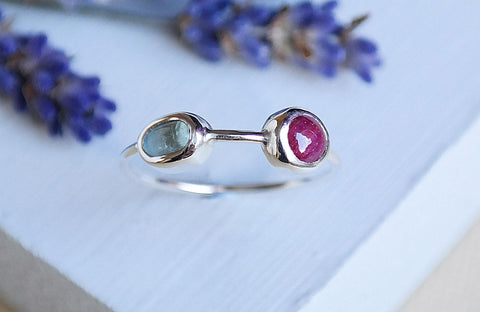
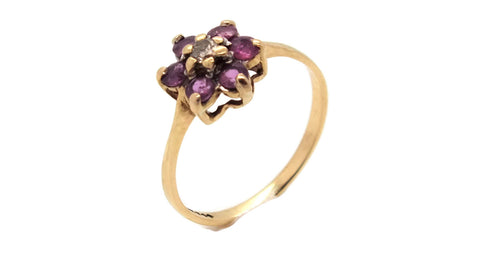
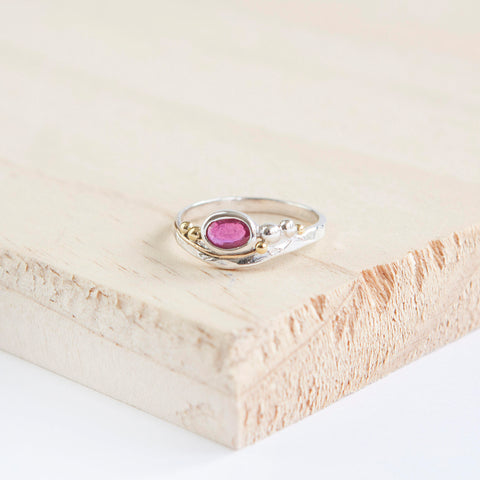
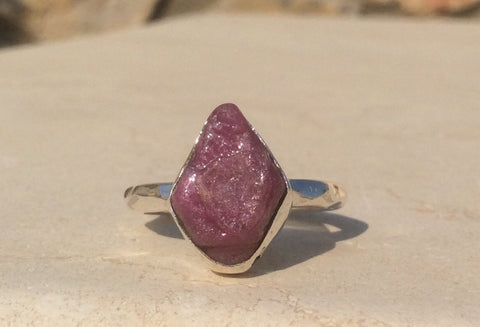
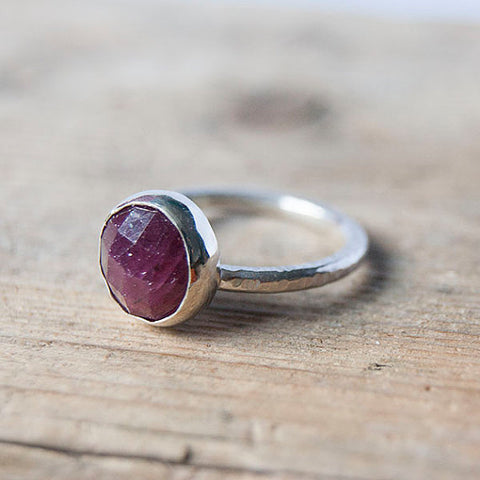
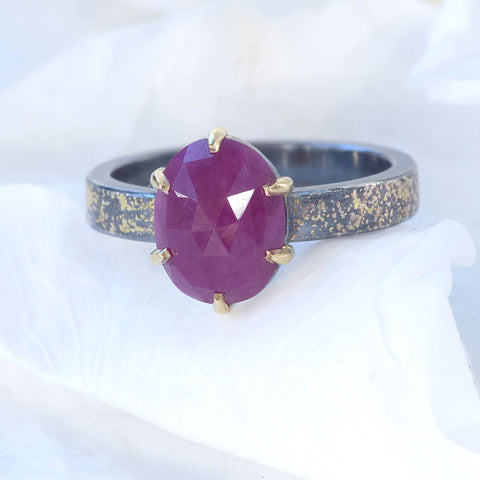
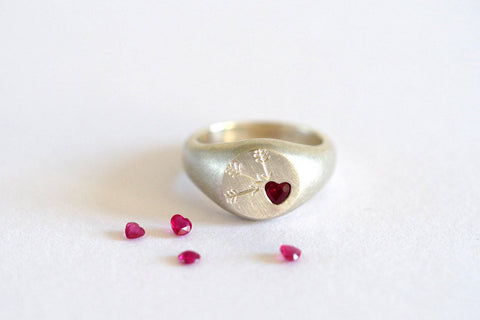
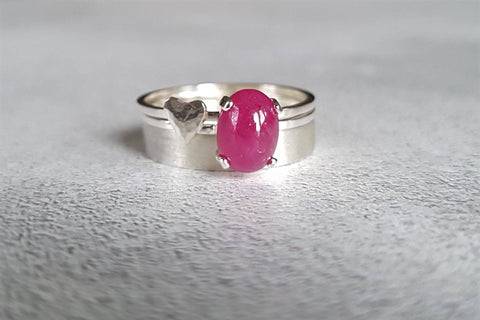
No comments:
Post a Comment